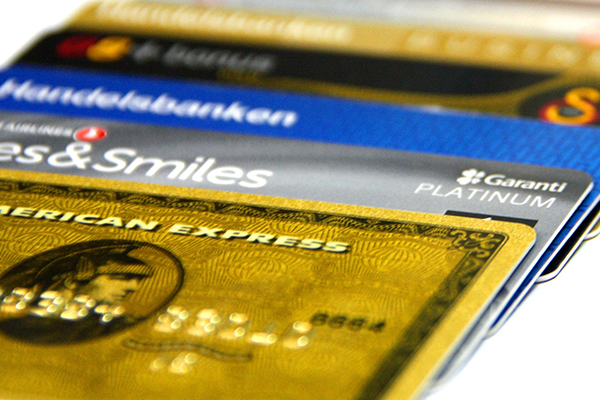The Chargeback Threat
As a business owner, you know that your merchant bank account is crucial for your payment processing and financial solvency. This powerful tool helps transactions proceed quickly and safely, and can also be an asset for funding and cash flow. However, chargebacks can threaten your account, and may even get your business blackballed by the major banks and business merchant services. This month, we are going to take a deeper look at chargebacks, how to prevent them, and why high-risk merchants such as debt collection agencies are particularly vulnerable to them.
What exactly is a chargeback? When a consumer disputes a debit or credit transaction, merchant account companies designate this situation as a chargeback. This can happen for a number of reasons. For example, if the purchase was made fraudulently, then clearly a consumer is entitled to dispute the charge. While this is the most common cause of a chargeback, high-risk businesses like debt collectors often face consumers who are suffering from financial difficulties, and make, then dispute payments to buy more time. Additionally, disputes can come from clerical errors, such as promised discounts that did not make it to the final transaction through incorrect accounting. Other common causes include returns not processed correctly, items not received (which is unfortunately common with e-commerce), and simple theft by the consumer through false claims.
While some chargebacks are unavoidable, the health of your merchant account depends on you keeping your chargeback ratio as low as possible. The acceptable limit is generally considered to be one percent or less, and many high-risk merchants struggle to keep to this standard. Managing your chargebacks starts by being informed about your ratio, which is why you need to stay on top of your merchant account. Ideally, when you set up a merchant account for a new business, your provider should have walked you through account management and reporting, but simply put, when determining your ratio, you divide the number of chargebacks by the total number of transactions for a given time period, typically by month. You always need to be cognizant of your ratio so that not only are you ensuring best practices, but you can also spot red flags, like a sudden uptick that seems out of the ordinary.
Before we cover prevention and remediation strategies, you need to understand that any chargeback is bad for your business. Even if you counter the dispute and win, the chargeback still remains on your record. Is that fair? Not necessarily, but merchant card processors only look at chargeback ratios and are unconcerned about your win rate.
When it comes to preventing chargebacks, the only way to stop them is to intercept the disputes before they happen and follow industry best practices regarding your payment processing security. Let’s take a look at how these two categories need to work within the average business operation.
Customer Service/Interaction
Ideally, if a customer has an issue or concern, you want them to come to you first. That way, you can resolve the situation amicably, thereby keeping chargebacks out of the equation. You need your staff to be adequately trained and professional, because they are the frontlines of prevention. Here are some basic considerations:
- Clear payment, return and shipping policies that are easy to find and understand help prevent many of the common chargeback triggers.
- Avoid duplicate processing. Staff that is in a hurry or outdated equipment can lead to duplicate processing, which creates completely avoidable chargebacks.
- Make it easy for customers to contact your business if they have questions or concerns. They should not have to hunt for your listing or dig through a poorly designed website. Also, provide adequate phone and email support. Understand that working customers may not be able to contact you during normal business hours, so you need to ensure they have an avenue to reach your business and get answers.
- Make sure that you have a DBA name set up so that a customer can see your it on the statement. With so much fraud going on, a vague corporate name on a bank/credit statement will alarm your customers that the charge is unrecognized. Since they can’t know it’s your legitimate transaction, their only recourse is to dispute it with their bank.
- Be proactive in establishing time expectations. Update an order status, provide information about delays, have shipping times posted, or if you are in a collections/service industry, let the customer know how long it will take payments to post or process. Every bit of information you can give to support realistic expectations helps prevent misunderstandings.
- Likewise, make sure that you always represent your business and service accurately. If you are in a retail industry, correct product descriptions, photos, and dimensions help avoid problems. In a service or collections industry, you need to identify who you are and what you do so that the customer feels confident in interacting with your business.
- Encourage your consumers to contact you with issues and cultivate a company culture that welcomes their questions or concerns.
Secure Payment Processing
- If you have not upgraded to EMV processing, you are already at a high risk for chargebacks. Swipe processing is one of the biggest contributors to fraud because cards are too easily cloned.
- If you have a merchant account for a website, you need to have your processing set up so that you prevent the common contributors to fraud. Require a billing address, the CVC code, and the name of the card-issuing bank.
- Watch for warning signs, like multiple failed attempts to use a card, large or multiple orders in short succession, or customers who want fast delivery on expensive purchases.
- If you accept phone payments, you need a script for verbal authorization that conforms to industry best practices. Check with PCI Compliance Regulations so that you know your phone processing meets or exceeds them.
- Stay up-to-date on security risks, scams, and similar efforts. If you hear about a hack or scam affecting your industry, double-check your own security and be communicative with your customers. Let them know to contact you directly if they are concerned, and warn them about imposters and their methods.
- Don’t get complacent. Secure payment processing policies and technologies evolve constantly. While no one wants the cost or aggravation of upgrading and updating, the risk that chargebacks pose to your business mean that you can’t afford to be passive about secure payments.
While you always want to minimize chargebacks, some will inevitably happen. Know your options for dispute and recourse so that, even if you can’t change your ratio, you can get back your money from malicious chargeback attempts. While you won’t be successful every time, you will grow into a confident manager of your business merchant account. As always, AVPS is here with top-quality merchant account solutions, and we can help you minimize your chargeback risks. To learn more, contact a representative today at 1-800-719-9198!
Save
Save








